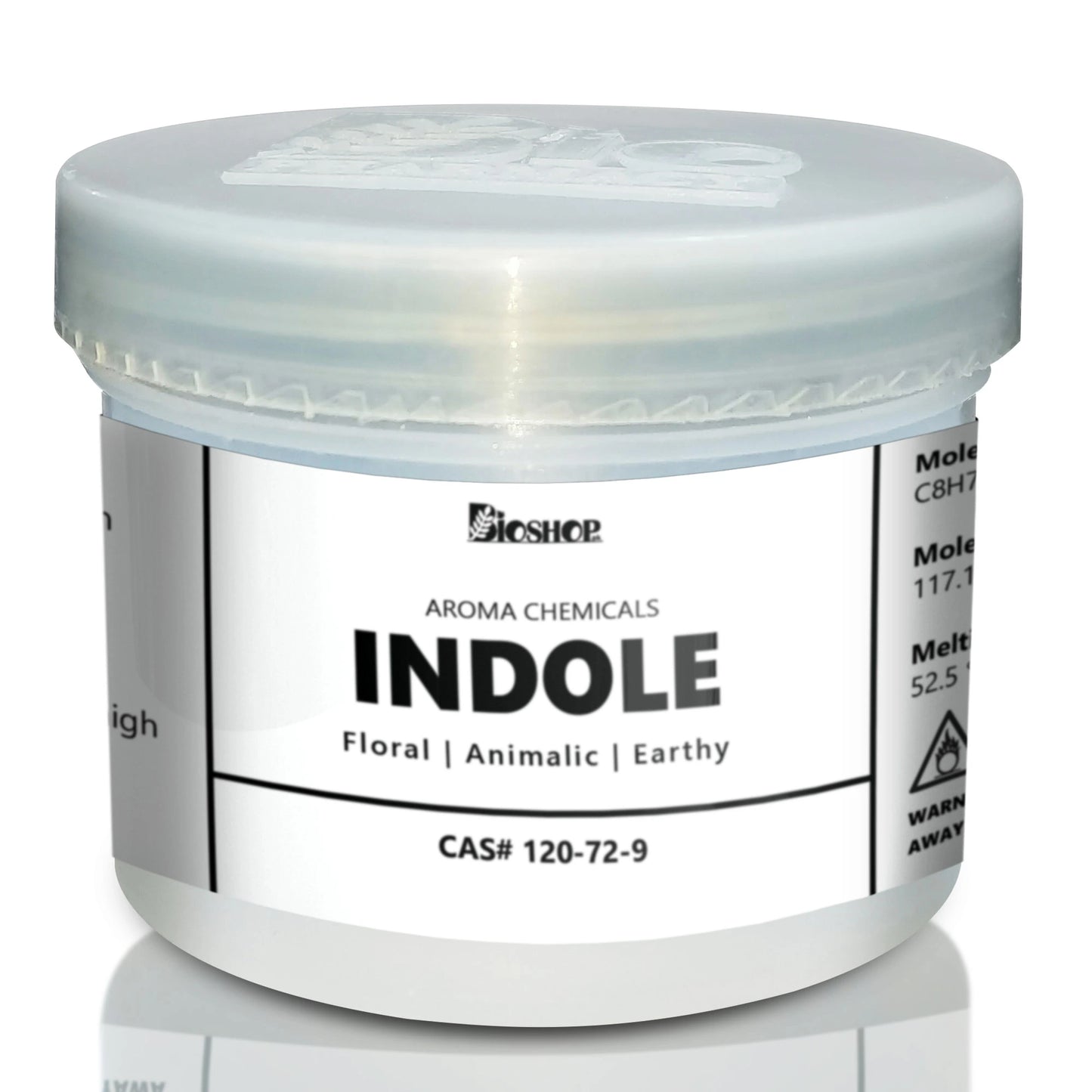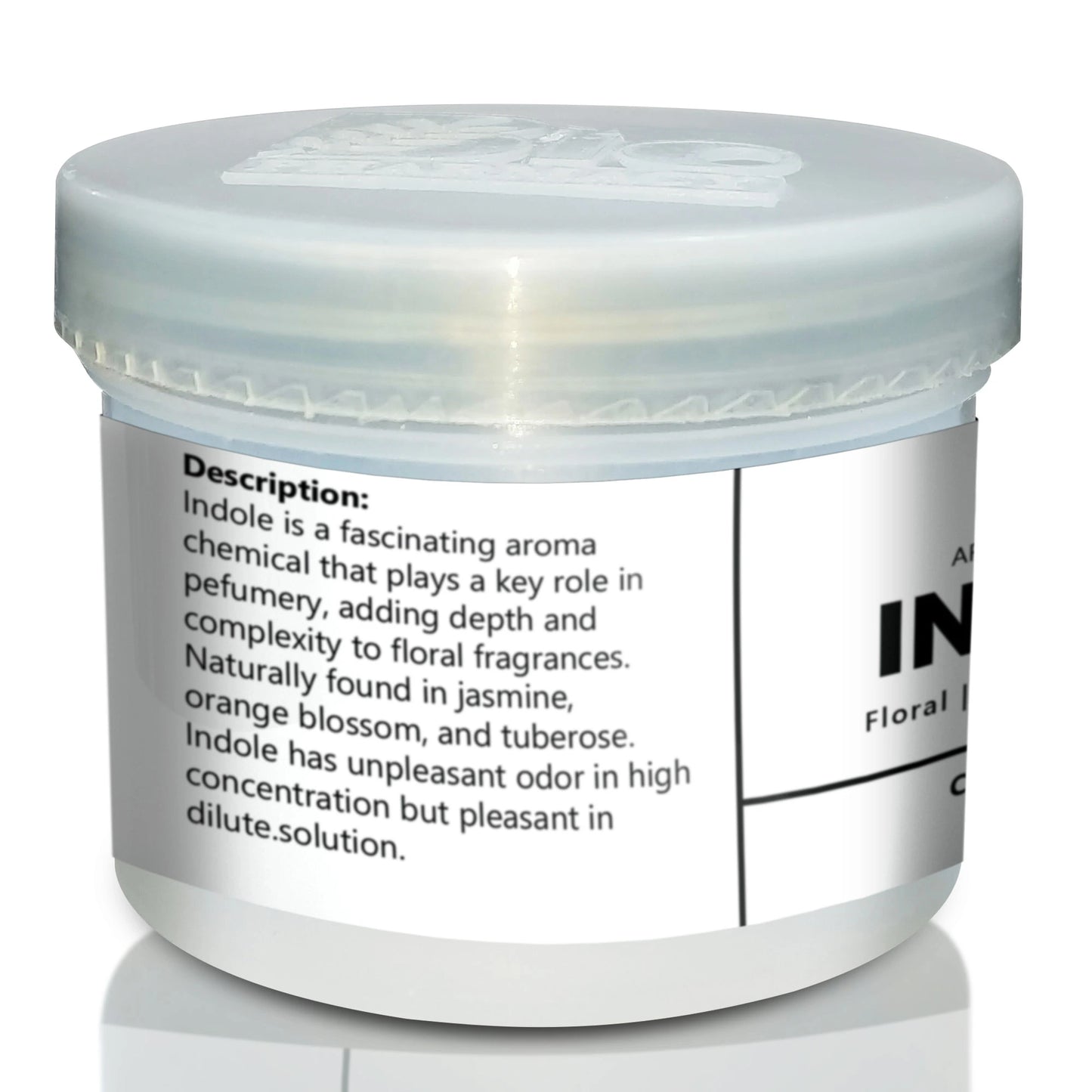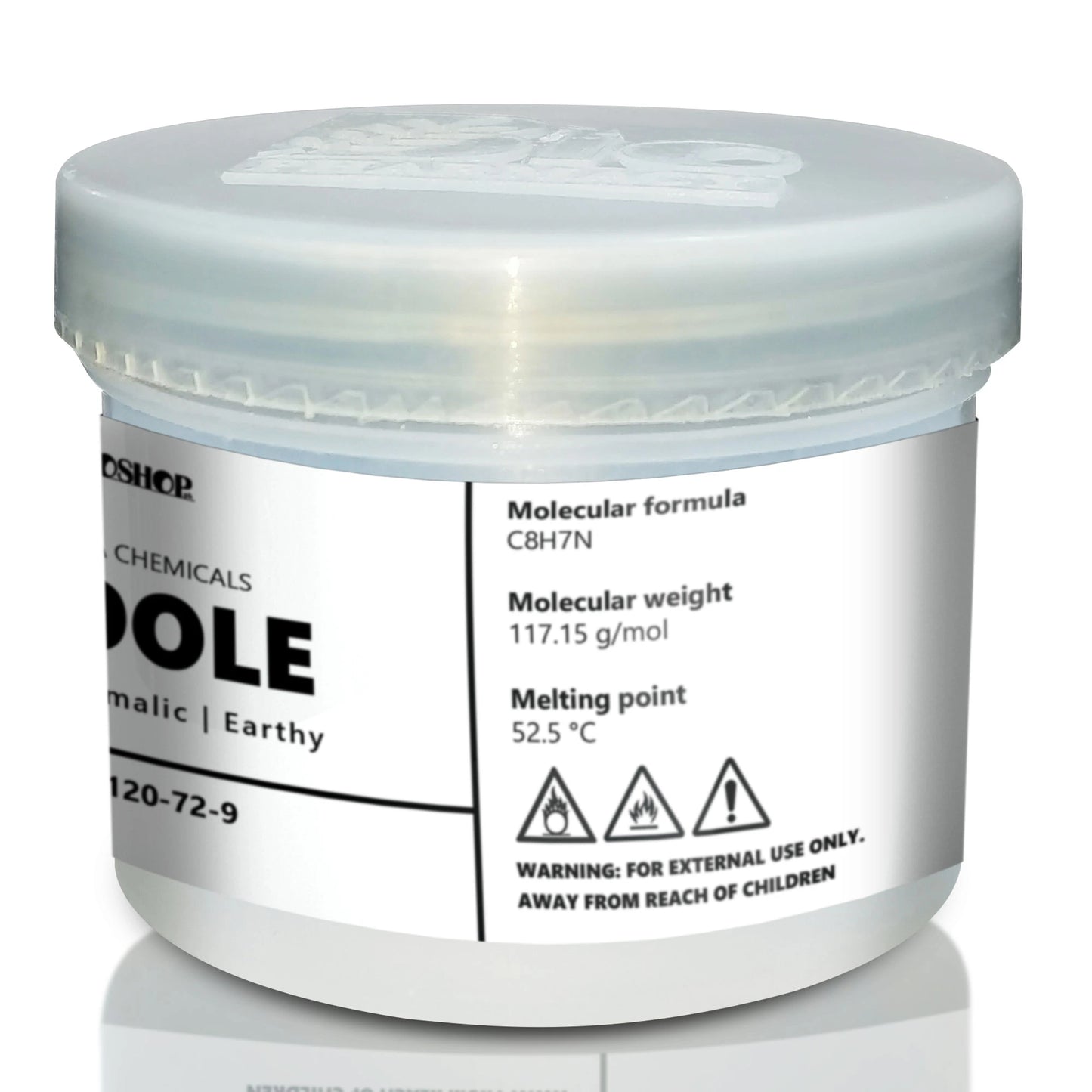Bio Shop
Indole
Indole
Olfactory Notes: Animalic · Floral · Jasmine-like · Warm · Narcotic · Earthy · Musky
Couldn't load pickup availability



Explore
Information About Indole
Key Features
- Adds intensity, sensuality, and realism to florals
- Ideal for white florals, oud blends, orientals, and vintage-style compositions
- Extremely diffusive and long-lasting even at trace amounts
- Common in attars, floral absolutes, exotic perfumes, and chypres
- Enhances natural jasmine and tuberose accords with soft dirtiness
About Indole
Indole is a powerful floral-animalic aroma compound famous for its ability to transform floral compositions by adding depth, sensuality, and natural realism. Found in trace amounts in jasmine, orange blossom, tuberose, and even human skin, Indole has a strong, even fecal smell in pure form—but in small doses, it becomes a beautiful narcotic enhancer for white florals and oriental bases.
Perfumers use Indole to give a decay-like warmth and elegance, often present in classic floral perfumes, attars, and vintage blends.
Technical Data
INCI Name: Indole
CAS Number: 120-72-9
Molecular Formula: C8H7N
Appearance: White to yellowish crystalline powder or liquid (depending on grade)
Odor Description: Animalic, jasmine-like, warm floral, slightly fecal in high concentration
Purity: ≥ 99% (neat)
Boiling Point: ~253°C
Flash Point: ~140°C
Density: ~1.2 g/cm³
Solubility: Soluble in alcohol, DPG, and oils
Recommended Usage Level: 0.01%–0.5% of concentrate
Category: Animalic-Floral Modifier – Heart/Base Note – Perfumery Use
Application Tips
Use 0.01%–0.3% to enhance floral realism and natural sensuality. Pairs beautifully with white florals, musks, ouds, and resins.
Pro Tip
💡 To add depth and sensual realism to florals 🌺🖤, use 0.01%–0.3% Indole in jasmine or tuberose perfumes.
🌸 Combine with orange blossom or ylang ylang to build narcotic white floral hearts.
🔥 Pair with labdanum, oud, or civet for deep oriental elegance.
🧼 Blend with clean musks to create contrast and vintage intrigue.
🔄 Always dilute properly—Indole is extremely potent and must be used carefully.
⚠️ Overuse can turn floral into overly animalic—use in trace amounts for best results.
FAQ
Q1: What does Indole smell like?
In pure form, it smells strongly animalic, but when diluted, it smells like natural jasmine, tuberose, or even human skin—deep, warm, and sensual.
Q2: Why is it used in perfumes?
It enhances floral realism, giving depth, longevity, and the "natural dirtiness" found in real flowers and skin.
Q3: Is it suitable for oil perfumes or attars?
Yes. Indole blends well with oils, DPG, or alcohol, making it ideal for attars, exotic floral bases, and incense compositions.
Q4: Is it safe to use on skin?
Yes in very low concentrations. Always dilute heavily and patch test, as it’s highly concentrated and powerful.
Q5: What perfumes is it used in?
Often found in classic floral perfumes, vintage chypres, exotic musky attars, and oud blends for extra depth.
Documentation
Upon request, we will provide.
Where Can You Safely Use Indole?
Discover how Indole performs across different applications—rated for safety, stability, and effectiveness.




